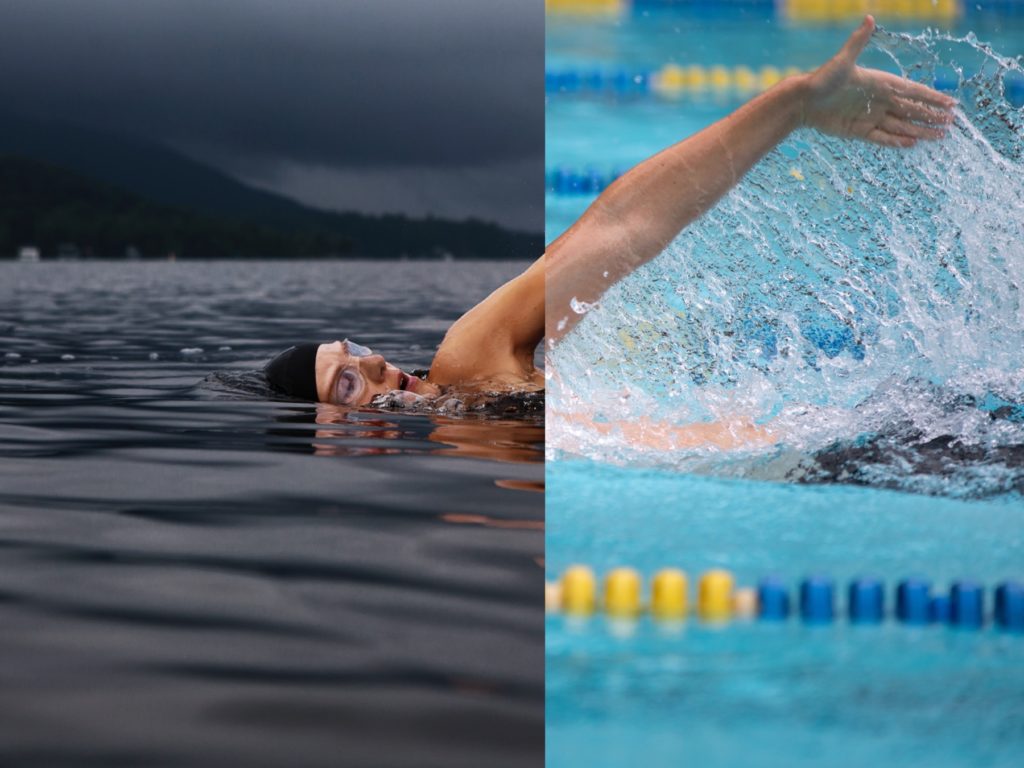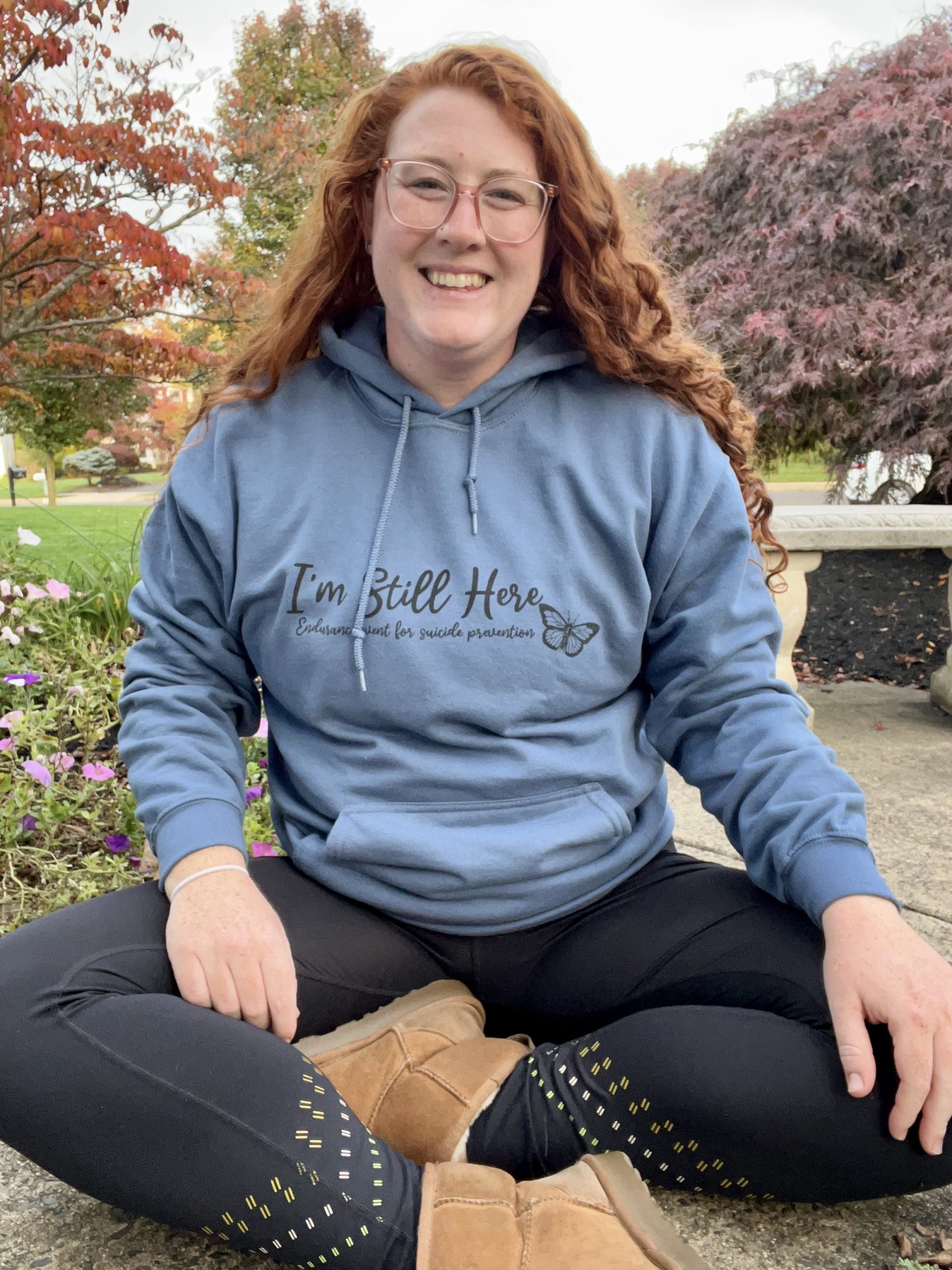Five Steps to Success for Adult-Onset Swimmers

I often get asked for swim advice given my extensive background and success in the sport, but 2022 was the first time I’d ever heard the term “adult-onset swimmer”. As much as I find the term amusing, I also think it’s endearing and the people who self-identify with it are always so open to learning more.
I’m currently working on my Level 1 US Masters Swimming Coach certification, and one of the first things they talk about is your coaching philosophy. After over a decade of teaching swim lessons, I have developed my own philosophy that can be broken down into the 5 S’s of Successful Swimming: Safety, Self-Confidence, Stroke Development, Stamina, and Speed. These steps are not 100% linear with one exception: safety ALWAYS comes first.
Five Steps to Success for Adult-Onset Swimmers
SAFETY
Just like anything else, swimming has safety precautions and measures that should be taken so that your workout is injury-free and without environmental risks. There are many ways to implement safety in the water, but here’s some of my top tips:
- If you are new to swimming entirely, stay in a depth that you can stand in. Begin with the basics: floating, kicking, blowing bubbles underwater, and being able to flip from your stomach to your back and vice versa.
- In the pool, the wall is your friend. There is no shame in having to grab the wall as you’re learning and building your sense of safety and comfort in the water. The pool is set up for safety and for less experienced swimmers to have ways to take a rest when they need it.
- Working with a swim instructor or coach is a great way to slowly increase your comfort zone in the water, but always swim with a lifeguard on duty.
- When around open water, always have a brightly colored swim buoy, a bright swim cap, and enough fuel and water for your workout. If it’s sunny out, have sunscreen and a plan to stay safe with the heat- you sweat while swimming, too!
SELF-CONFIDENCE
Confidence in your swimming will come in tandem with improvements in stroke development, stamina, and speed. If you have a history of anxiety or fear around the water, feeling confident is key to moving forward with anything else.
Of the five steps, this one is the most mental and the least technical, but there are concrete steps you can take to feel more comfortable and confident that you CAN DO IT!
- If open water swimming, stay close to the edge. Prior to entering, splash your wrist and neck with water to get used to the temperature. If putting your face in the water makes you nervous or if you have breathing issues you can also splash your face.
- Have a mantra. My race mantra is “no one cares what my time is”. My open water swimming mantra is “I am safe, this is safe, keep breathing”. There can be a shock to your body when entering cold water, it’s good to have a mantra. Repeat your mantra in the few minutes that it takes your body to adjust and pass through any panic.
- Use equipment.
- Open Water Options:
- A friend in a kayak with fuel, water, and something to rest on if you get tired or scared.
- Pools
- Kickboards, noodles, and other tools can be used to help you feel safe and build confidence.
- Open Water Options:
STROKE DEVELOPMENT
Just like any other skill, swimming takes time to improve and get into a rhythm. I had a coach tell me that athletes needed to do 10,000 strokes focused on a particular movement. The thinking was this would create a more natural stroke, and I agree. A 25 yard freestyle takes between 15-20 strokes for most people, so this adds up quickly. Stoke development is not a one and done. When you want to change things up, it’s helpful to come back to stroke development to build skills. What would a change look like: switching from breathing on one side to bilateral breathing, Focusing on stroke development will increase your stamina and speed.
- Drills! There are all sorts of drills that can help with your stroke. Our team at Run•Tri•Bike has compiled drills over time, but you can also Google “drills for ______” and lots of reputable exercises come up.
- A coach can help with stroke development. This can be a video stroke analysis or an in-person coach. Their experience level and an outside perspective is always helpful.
- Record yourself swimming and post the video on a social platform. I’ve done this and gotten wonderful advice from my peers.
- Sighting: Working on sighting in open water will
- Help you race more confidently,
- Be able to stay on course
- Not add in unnecessary extra swimming by going too far out (I speak from experience here).
Sighting can be difficult to pick up but it is an absolute must in your stroke development for open water swimming.
- Consistency: when I taught adult swim lessons a few years ago, I had some swimmers who complained they weren’t improving. My first response would be “are you swimming at all outside of lessons?” and the answer was always no! Swimming once a week is nice, but if you want to build your skills, 2-4 times a week is recommended.
STAMINA
Just like running and cycling, you’ll want to build stamina in swimming. While you may not win the triathlon based on your swim, it’s vital to a strong race. This strong start can lead to higher confidence going back on land. Or, you may be interested in a 5k or marathon swim. Marathon swimming is defined as any swim over 10,000 meters. Here’s some tips to increasing stamina:
- Knowing your goal distance. If you’re racing your first sprint triathlon, the swim will be anywhere from 300-1000 meters. Similar to training for your first 5k, the goal isn’t to win the race but to finish and feel strong. You should be reaching this distance before you race to have an estimate of how long it will take and how your body feels during the race. For example, I’ve been working on my pull because I was finding my arms got sore about a quarter mile in to open water races, and with my current goals, I need a higher threshold before getting sore.
- When adding distance to your swims, you’ll follow the same rule as running. Your training volume in yards or meters shouldn’t be more than 10% more than what it was the prior week. For example, in my 5k swim training, my first week of training was 5,7000 yards. To calculate 10%, I multiplied 5,700 by 1.10. This gave me a week 2 volume of 6,300.
- When increasing distance, you want to make sure you aren’t over using your shoulders. To do this you can switch to another stroke for part of the workout. You can also add in a kickboard or fins and include kicking. My increase from 5,700 to 6,300 is slightly over the 10% threshold. To avoid shoulder fatigue, I added fins to my longest workout of the week. I did this so that I wasn’t going into week 3 with any issues in my shoulders or arms.
SPEED
Who doesn’t love getting faster? While speed isn’t as important as stamina in your first triathlon, it is a satisfying way to see progress.
- Set a benchmark. If you want to increase speed, it’s tempting to use the pace on your watch. However, not all swim workouts are supposed to be the same speed. You may have to pull back on speed to increase yardage. The best way to track speed is to time trial a particular distance. The 100, 200, 400, 500, and 1000 are popular benchmarks. After a few weeks or months, swim the time trial again and check your progress.
- Bilateral breathing: breathing on both sides is helpful for speed. This allows you to switch up breathing patterns and gives flexibility in open water for sighting.
PROGRESS ISN’T LINEAR.
You may be working on speed and realize that your kick is not as strong as you’d like it to be. Or, you’re swimming in the ocean for the first time and need to build up confidence with the salt water and the waves. All of this is valid and typical! As I mentioned at the beginning, this list is not an exact formula. This is a suggested progression where one S is used as the foundation for another. I believe that stamina helps build speed more than speed builds stamina. This does not mean that you need to work on stamina if your goals don’t include very long swims. I hope these steps can be a baseline, and if you have any specific questions or are looking for coaching, feel free to reach out to me on Instagram @danielle.trisandtbis or via email, concussiongirl2ironwoman@gmail.com. If you use these tips, feel free to tag me and let me know how things are going!
Happy swimming! You’re doing great.

Danielle Moore is a swimmer and triathlete living outside Philadelphia, Pennsylvania. Her athletic journey picked up at 10 years old when she started swimming in the summers, and ended up as a butterflyer for both her high school and college teams. She ran track in middle and high school as well, but swimming is her true passion in sports. Danielle has also been teaching swim lessons since 2010 and received her US Masters Swimming Level 1 Coach certification in March 2022. She raced her first sprint triathlon in 2019 and has been hooked ever since- she will be racing her first half Ironman in September 2022.









